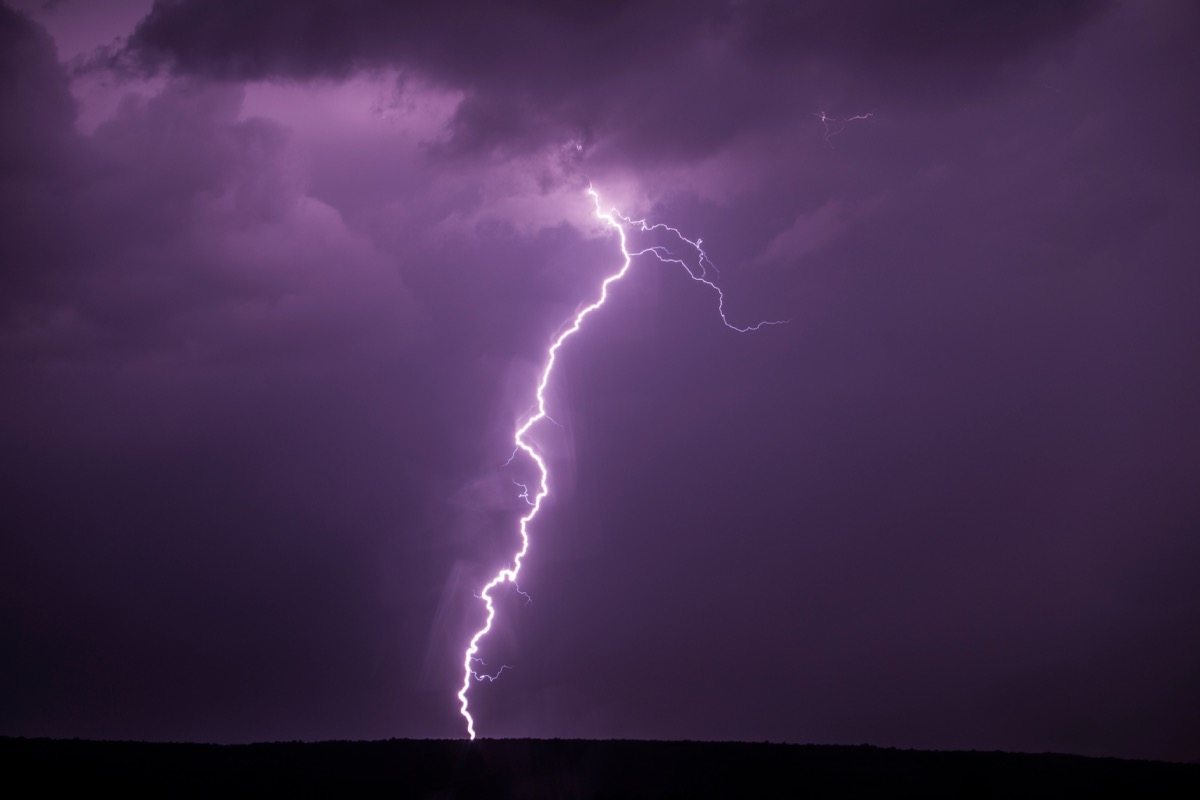RELATED: Never Do This When You Shower in the Morning, Doctors Warn. While it may feel like you’re safe as long as you’re indoors during summer storm, that’s not always the case. The Centers for Disease Control and Prevention (CDC) caution that if there’s a thunderstorm going on, you should avoid showering entirely. “Lightning can travel through a building’s plumbing,” according to the CDC, and the free ions within your water can conduct electricity, meaning that you risk being struck by lightning when you shower during a thunderstorm. For more health and safety news delivered straight to your inbox, sign up for our daily newsletter! The majority of lightning strikes occur in outdoor settings, but the number that take place inside is anything but insignificant. According to the CDC, approximately 32 percent of all lightning-related injuries take place indoors. Though the overall risk of being struck by lightning is low, the National Weather Service (NWS) reports that an average of 270 people in the U.S. are struck by lightning each year, among whom 27 will die. It’s not just taking a shower during a thunderstorm that could be putting you in harm’s way, however—numerous indoor activities could be inadvertently putting you at risk. To protect yourself, the CDC recommends doing no activities that involve water—including washing dishes—during a thunderstorm, as well as avoiding the use of any electronic equipment or corded phones. The health authority also notes that lightning can travel through wires and other conductive materials encased in concrete, so if there’s a thunderstorm in your area, don’t touch any walls or floors made from concrete.ae0fcc31ae342fd3a1346ebb1f342fcb You may think you’re in the proverbial clear once the rain from a thunderstorm has stopped, but the risk of being struck by lightning doesn’t clear once the clouds have parted. According to the NWS, lightning can strike objects and individuals over 10 miles away, even when the storm seems to have moved on. In fact, approximately half of all lightning-related fatalities happen after a storm has come and gone. To protect yourself, the NWS recommends waiting at least 30 minutes after the last thunderclap to go outdoors again. RELATED: If You’re Doing This in the Shower, Doctors Say to Stop Immediately.



